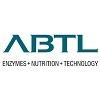Explore all the information on
Poultry nutrition - Other additives
Alternative feed additives have promising importance in broiler production due to the ban on the use of certain antibiotics. The most used antibiotic alternatives in broiler production are phytogenics, organic acids, prebiotics, probiotics, enzymes, and their derivatives. Antibiotic alternatives have been reported to increase feed intake, stimulate digestion, improve feed efficiency, increase growth performance, and reduce the incidence of diseases by modulating the intestinal microbiota and immune system, inhibiting pathogens, and improving intestinal integrity. Simply, the gut microbiota is the target to raise the health benefits and growth-promoting effects of feed additives on broilers. Therefore, naturally available feed additives are promising antibiotic alternatives for broilers.
There are several components of grain and plants that can cause detrimental effects on animal production. These components are commonly known as antinutritional factors. According to their mode of action, anti-nutritional factors can be grouped as follows: Substances that limit or decrease the digestion or metabolism of proteins, ex. lectins and saponins. Substances that interfere or decrease the correct utilization of minerals, ex. phytic acid and oxalic...
Comments : 0
Recommendations: 2
Common names Blood meal, blood flour, fresh blood [English], farine de sang, sang frais [French], harina de sangre [Spanish] Description Blood can be collected during the slaughter of various livestock species (cattle, pigs, chickens, etc.) under a wide range of conditions. It is usually dried and made into blood meal so that it can be...
Comments : 31
Recommendations: 3
Every year the marketing age of broilers decreases by an average of 0.75 days for the same performance. This trend is likely to continue in the same direction for the coming years. Nutrition plays a vital role in enabling this improvement. As the feed cost represents an expensive input (~70-80% of broiler production cost), the poultry producer should be aware of the dynamics of the feed in its influence on final product quantity and quality. Formulating feed ideally requires in-depth...
Comments : 148
Recommendations: 13
Ayurveda (The Science of healthy living), a centuries old traditional system of health care, is an evidence based science and one of the oldest medical discipline. Ayurveda is a complete system which emphasizes living in harmony with the environment. Ayurveda is the synthesis of Ayur- meaning ‘life’ and Veda meaning – ‘knowledge’. Ayurveda, the Science of Life , based on strong pillar of positive health, is a holistic approach to total...
Comments : 7
Recommendations: 0
For many years reactive oxygen species (ROS) production in biological systems has been considered to be detrimental. However, a pleasant face of ROS has received recently tremendous attention. Indeed, it has been proven that ROS participate in cell signalling, transcription factors regulation and vitagene activation to maintain optimal cellular redox balance and to provide an effective stress adaptation [1]. In fact, redox biology is a very rapidly developing area of modern biological...
Comments : 1
Recommendations: 1
...
Comments : 0
Recommendations: 0
Hypothesis Guanidinoacetic acid (GAA) is synthesized in the liver and kidneys from arginine (Arg) and glycine (Gly) and subsequently methylated by S-adenosylmethione to creatine (2). Heat-stressed birds respond to the presence of higher uric acid concentration and changes in electrolyte balance by increasing the usage of osmoprotectants. These osmolytes are viable endogenous precursors for Gly (3). On the other hand, high supplemental lysine level on modern genetic broiler...
Comments : 2
Recommendations: 1
...
Comments : 0
Recommendations: 0
Dr Jaiguru Kadam, Technical Manager at Vinayak Ingredients, talks about the importance of Choline in animal nutrition....
Comments : 0
Recommendations: 4
Botanicals represent a wide class of complex compounds that naturally contain active principles with numerous biological functions. Among them, the anti-inflammatory and antioxidant actions are of key interest to support intestinal health during stressful phases. The aim of this study was to investigate the ability of a thymol-based blend of botanicals (BOT) to protect intestinal Caco-2 cells from the damages induced by an inflammatory challenge in vitro. Caco-2 cells were differentiated on...
Comments : 0
Recommendations: 1
Systemic enzymes have long history in medicine and are widely used to combat various kinds of stress, inflammatory disorders & immunosuppression. Key ingredient in Immunotech is Serratiopeptidase which is a protein (proteolytic) enzyme isolated from the nonpathogenic enterobacteria Serratia E15 found in silkworms. ...
Comments : 3
Recommendations: 2
In this Interview, Dr. Detlef Kampf, Head of Animal Nutrition at DLG Competence Center Agriculture, shares his overview of trends in feed in 2022...
Comments : 0
Recommendations: 1
Ewa Sujka talks about the sanitary challenges of organic farming production and also gives an overview of the solutions that Liptosa offers in the market.
*Certain information associated with products, their composition and claims may be different depending on the geographical region and may not be applicable in all countries. Liptosa reserves the right to adapt to the requirements and legislation in each case.
The information and technical recommendations provided herein are based on...
Comments : 0
Recommendations: 5
.jpg&w=3840&q=75)

(Mandarin) Strengthening Pellets for Better Feed Performance
Suggested link
Carlos López Tomé, Veterinarian, Technical Department at Liptosa, speaks about the mode of action of Naturcoline, a Choline adjuvant for poultry nutrition.
*Certain information associated with products, their composition and claims may be different depending on the geographical region and may not be applicable in all countries. Liptosa reserves the right to adapt to the requirements and legislation in each case.
The information and technical recommendations provided herein are based on...
Comments : 0
Recommendations: 2
Antonio Martínez Sánchez, General Manager at LIPTOSA, points out the benefits of using Phytogenics as feed additives
*Certain information associated with products, their composition and claims may be different depending on the geographical region and may not be applicable in all countries. Liptosa reserves the right to adapt to the requirements and legislation in each case.
The information and technical recommendations provided herein are based on Liptosa's current knowledge and...
Comments : 0
Recommendations: 2
Experts from Hankkija Finnish Feed Innovations share their points of view about how a natural resin acids product improves gut integrity and performance of animals...
Comments : 0
Recommendations: 2
Birds are omnivorous species, they are evolutionarily designed to consume products from plant and animal origin. However, for several reasons, poultry nutrition is shifting more and more to a vegetable diet. This shift has resulted in losing some important benefits of animal products, including creatine, an essential com-pound found in meat but not in plants. A feed ingredient survey conducted at AlzChem showed that creatine values found for meat meal (n=38) or fish meal...
Comments : 1
Recommendations: 5
Reducing limitations in intracellular energy metabolism and improving cellular energy homeostasis can maximise the feed utilisation efficiency in broilers. Optimising the creatine stores by supplementing guanidinoacetic acid (Creamino) can maximise performance, a study shows. Could you improve the profitability of production by adding Creamino on top of an application or energy-saving effect? And would this make a valuable contribution to reducing the impact of currently...
Comments : 0
Recommendations: 1
This is a reminder that the Poultry Science Association and PSA Foundation are accepting applications for two undergraduate scholarships with funding starting in 2023.
Students with sophomore or junior credit standing are highly encouraged to apply for the Diamond V Endowed Undergraduate Poultry Science Scholarship and the...
Comments : 1
Recommendations: 0




.jpg&w=3840&q=75)










.jpg&w=3840&q=75)



.jpg&w=3840&q=75)


.jpg&w=3840&q=75)













